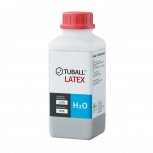Grafenske nanocevi za anti-statičke tekstilne premaze: ESD bezbednost u skladu sa međunarodnim standardima


TUBALL™ nanocevi are a jedinstveni anti-statički agens koji obezbeđuje nisku električnu provodljivost na niskim dozama koja se ne može postići sa bilo kojim drugim standardnim provodnim aditivom. Tekstili sa unapređenom električnom provodljivošću se koriste radi izbegavanja opasnosti od elektrostatičkog pražnjenja (ESD) i mogu postići anti-statičke performanse koje zahtevaju bezbednosni propisi.
TUBALL™ grafenske nanocevi su dostupne u različitim oblicima u zavisnosti od industrijske aplikacije: aditiv TUBALL™ MATRIX koji se lako koristi a koji predstavlja liniju koncentrata na bazi nosača polimera i prethodno disperzovanih TUBALL™ grafenskih nanocevi, i suspenzije tečne faze na bazi TUBALL™ sa pravilno disperzovanim i stabilizovanim grafenskim nanocevima.
TUBALL™ grafenske nanocevi: Dobre performanse za sve ključne parametre
Za razliku od ostalih provodnih agenasa, TUBALL™ grafenske nanocevi su svestrani provodni agens koji nudi dobre performanse za sve ključne parametre.

Napomena: Ovaj dijagram predstavlja prosečne trendove u poređenju sa ostalim aditivima na osnovu podataka kompanije OCSiAl. Performanse proizvoda se mogu razlikovati u zavisnosti od tipa i formulacije proizvoda.
| Parametar | Smese amonijaka | Čađ | TUBALL™ nanocevi |
|---|---|---|---|
| Radna doza, wt.% | 0.2–4.0 | 4–12 | 0.01–0.1 |
| Opseg otpornosti, Ω/sq |
108–1011 | 103–1011 | 103–1011 |
Uticaj na mehaničke performanse |
mala negativna | snažna negativna | nepostojeća |
| Uticaj na reologiju | nepostojeća | snažna negativna | uporedno |
| Mogućnost bojenja | da | nepostojeća | da |
| Formiranje prašine tokom proizvodnje | nepostojeća | visoko | nepostojeća |
| Otpornost nezavisna od vlage | ne | da | da |
| Stabilna otpornost u vremenu | ne | da | da |
Ključna prednost 1: Usaglašenost sa industrijskim bezbednosnim propisima
Postoji niz standarda koji se odnose na propise za ESD zaštitu u oblasti zaštitne odeće. Grafenske nanocevi se mogu koristiti da ispune ove zahteve:
- EN ISO 18080, EN 1149, EN 61340, EN 16350, ANSI/ESD STM2.1, Direktiva 1994/9/EC i ATEX Direktiva 95, GOST 19616, GOST 12.4.124 i ostali
- U zavisnosti od relevantnih standarda, tipa tekstila i konačne primene, generalno, otpornost bi trebalo da bude u opsegu od 105–1011 Ω
- Primene: nafta i gas, hemijska postrojenja, farmaceutske i medicinske zone, proizvodnja elektronike, automobilska industrija, itd.
Ključna prednost 2: Obojene anti-statičke smese
Veoma niska doza koja se zahteva od grafenskih nanocevi kreira priliku da se proizvedu rešenja u boji gde takav zahtev postoji.

0.25–1.5 wt.% of TUBALL™ MATRIX 814 za 105-109 Ω/sq sa održavanjem boje. OCSiAl interna PVC-plastisol formulacija. Debljina uzorka: 2 mm. ASTM D257
Obojeni anti-statički nitril film sa 0,06 wt.% TUBALL™

Površinska otpornost 107 Ω/sq
Ključne prednosti 3: Standardna oprema za obradu i mešanje
Proizvodi na bazi TUBALLä se mogu obraditi standardnom opremom koja se inače naširoko koristi od strane proizvođača tekstila.
Ostale prednosti
- Bez oslobađanja ugljenika na površini
- Trajni i stabilan nivo otpornosti
- Bez negativnog uticaja na mehaničke osobine
- Minimalni uticaj na gustinu, viskozitet i ostale reološke osobine formule
- Otpornost ne zavisi od vlage
TUBALL™ MATRIX za silikonske premaze (LSR, RTV)
TUBALL™ LATEX za NBR, NR, PU Lateksi
Primeri primene

Silicone Textile Coating

Latex Textile Coating

Tekstil
Obratite pažnju na smernice za obradu
Preuzmite PDF verziju:
Video instrukcije za upotrebu:
TUBALL™ LATEX - Processing Guidelines
TUBALL™ MATRIX - Processing guidelines
Dodatne informacije
ESD Colored Latex Gloves - New Standard
Electrical resistivity guidelines
Kontaktirajte nas da razgovaramo o specifikacijama vašeg projekta ili da poručite uzorak



